
The Lindbergh baby kidnapping, crime involving the kidnapping and murder of Charles Lindbergh, Jr., the 20-month-old son of aviator Charles Lindbergh. The child’s badly decomposed body was found less than 5 miles from the Lindbergh home two months after the kidnapping, dead from a blow to the skull. Public outrage led the U.S. Congress to pass the Federal Kidnapping Act (known as the Lindbergh Law) on June 22, 1932, which made kidnapping across state lines a federal crime and stipulated that such an offense could be punished by death. In 1935 Bruno Hauptmann was arrested and charged with the crime. He was convicted and executed in 1936 though he proclaimed his innocence until the end. The kidnapping was one of the most highly publicized crimes of the century.

Los Angeles Police Investigate Pacific National Robbery 1928 (Link)
Bank robbery is defined as: the taking, whether by force or intimidation, of any property or money in the care, custody, control, etc. of any bank, credit union, or savings and loan institution. During the Prohibition and the Great Depression, many of the more famous gangsters were bank robbers.

Seattle Times May 1934
Labor racketeering is the infiltration and/or control of a union or employee benefit plan for personal benefit through illegal, violent, or fraudulent means. Organized crime groups often engage in labor racketeering. However, the types of organized crime groups that engage in labor racketeering and the methods they employ have evolved over time.

Aftermath of St. Valentine's Day Massacure 1929
The St. Valentine’s Day Massacre was a mass murder of a group of unarmed bootlegging gang members in Chicago on February 14, 1929. The bloody incident dramatized the intense rivalry for control of the illegal liquor traffic during the Prohibition era in the United States. Disguising themselves as policemen, members of the Al Capone gang entered a garage run by members of the George (“Bugs”) Moran gang, lined their opponents up against a wall, and shot them in cold blood.

The Kansas City Massacre involved the attempt by Charles Arthur “Pretty Boy” Floyd, Vernon Miller, and Adam Richetti to free their friend, Frank Nash, a federal prisoner. Two Kansas City Police Officers were killed immediately, followed seconds later by Frank Nash. Oklahoma police Chief Reed and FBI Agent Caffrey pronounced dead on arrival at the hospital. The Kansas City Massacre was a dark chapter for law enforcement and for the FBI in particular—at that time, one of the deadliest attacks on the law the nation had ever seen. Within a year of the tragedy, Congress responded by giving us new tools to fight crime—including statutory authority to carry guns and make arrests, both of which have been pillars in our work to protect the nation ever since. In July 1935, as the capstone of its newfound identity and successful fight against gangsters, the organization was renamed the Federal Bureau of Investigation—the FBI.

New York City Deputy Police Commissioner John A. Leach (right) watching agents pour liquor into the sewer following a raid, c. 1920.
Bootlegging, in U.S. history, illegal traffic in liquor in violation of legislative restrictions on its manufacture, sale, or transportation. The word apparently came into general use in the Midwest in the 1880s to denote the practice of concealing flasks of illicit liquor in boot tops when going to trade with Native Americans. The term entered into the wider American vocabulary when the Eighteenth Amendment to the U.S. Constitution effected the national prohibition of alcohol from 1920 until its repeal in 1933.